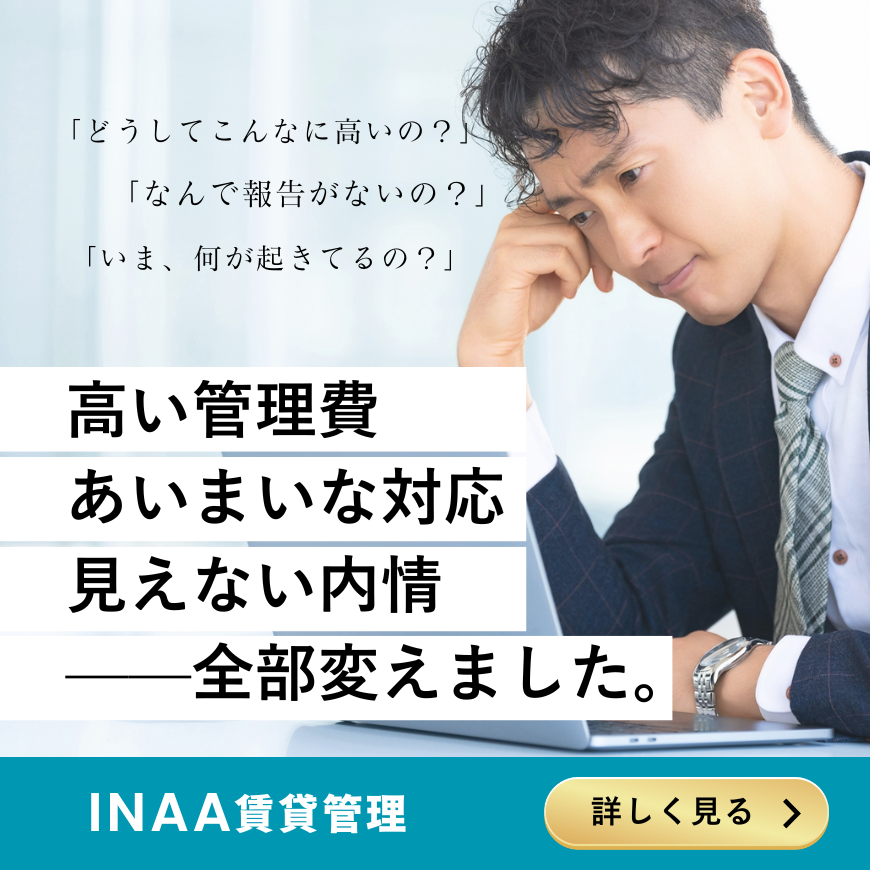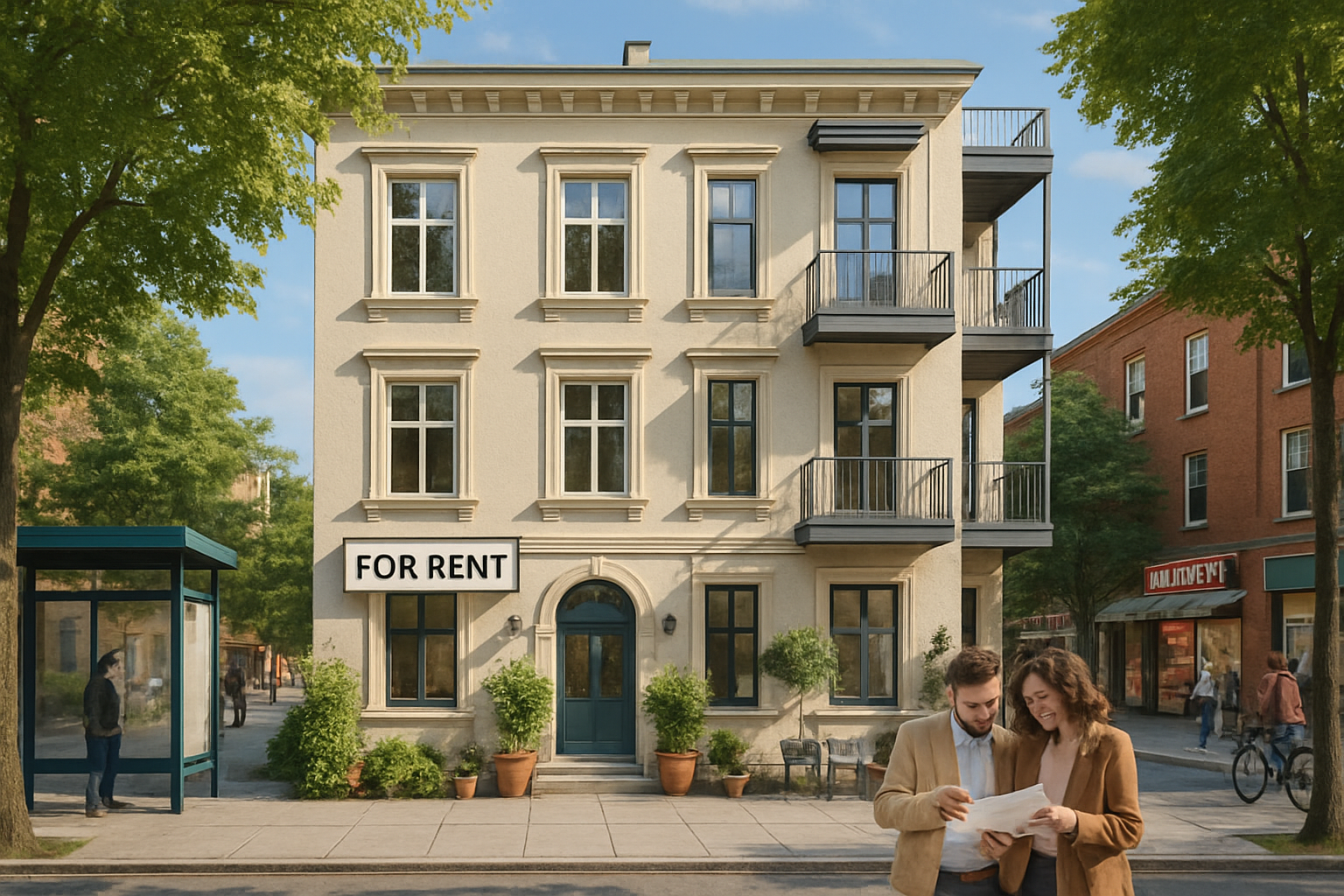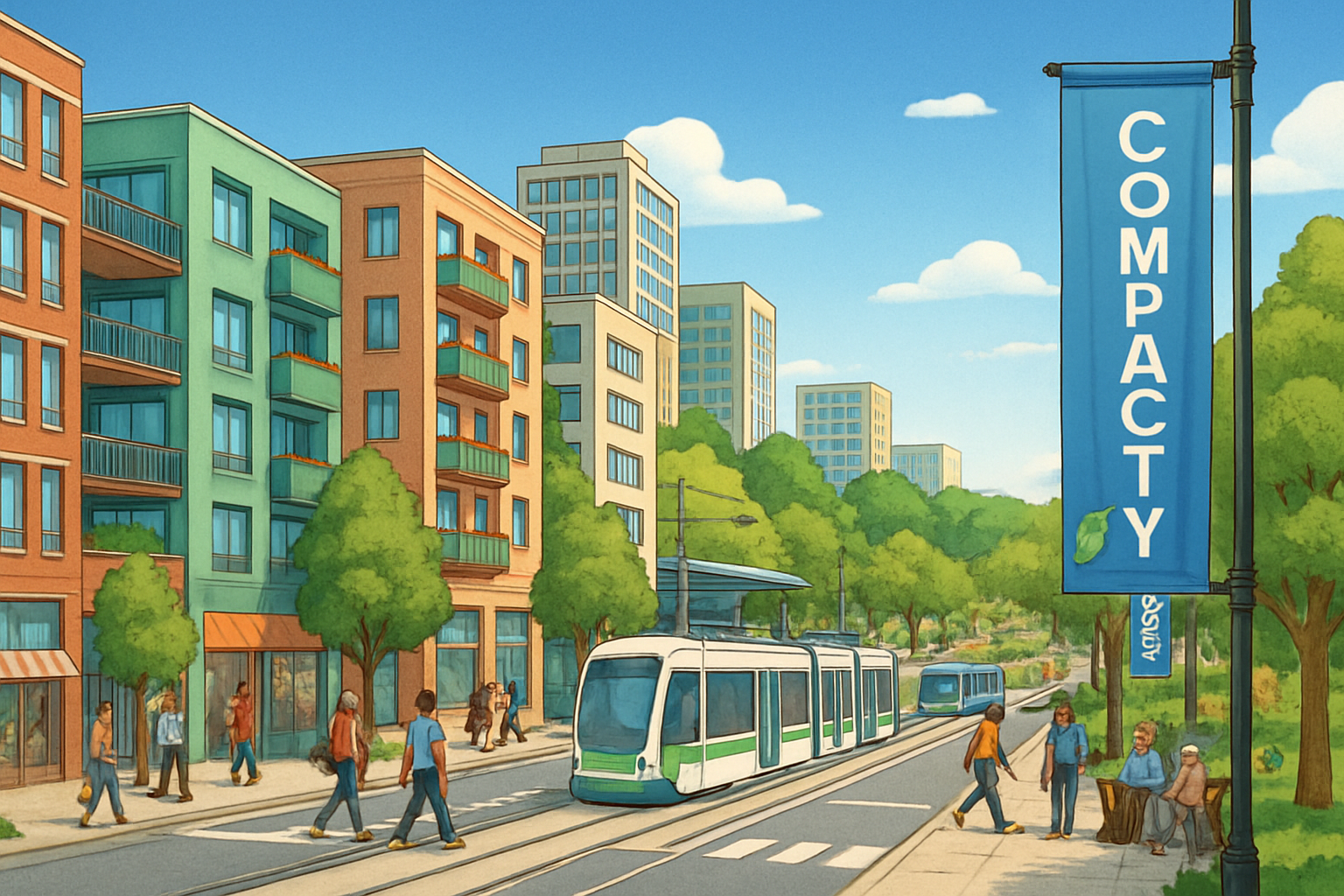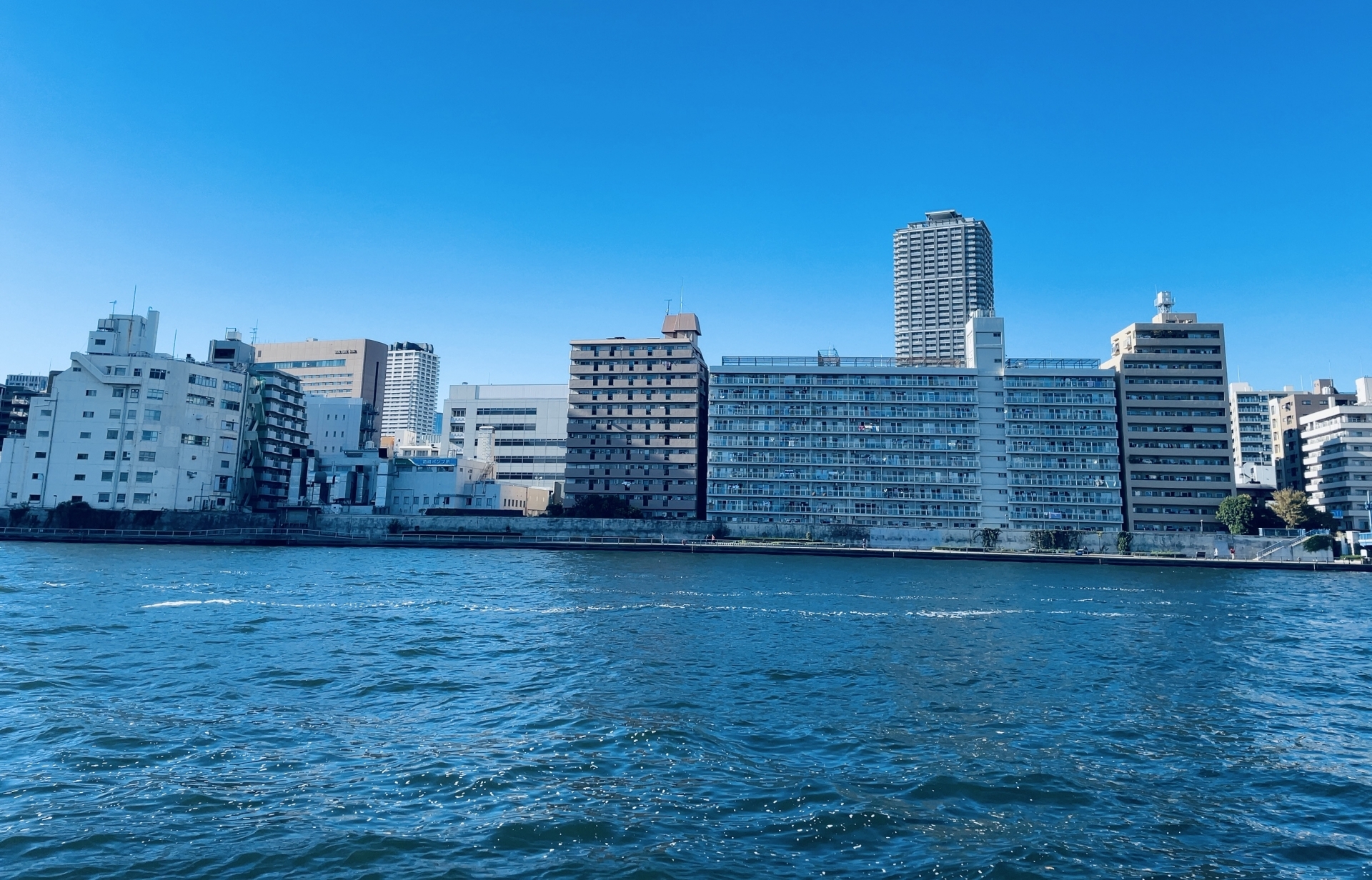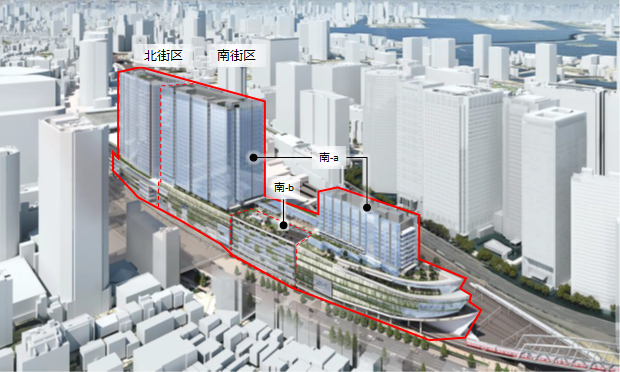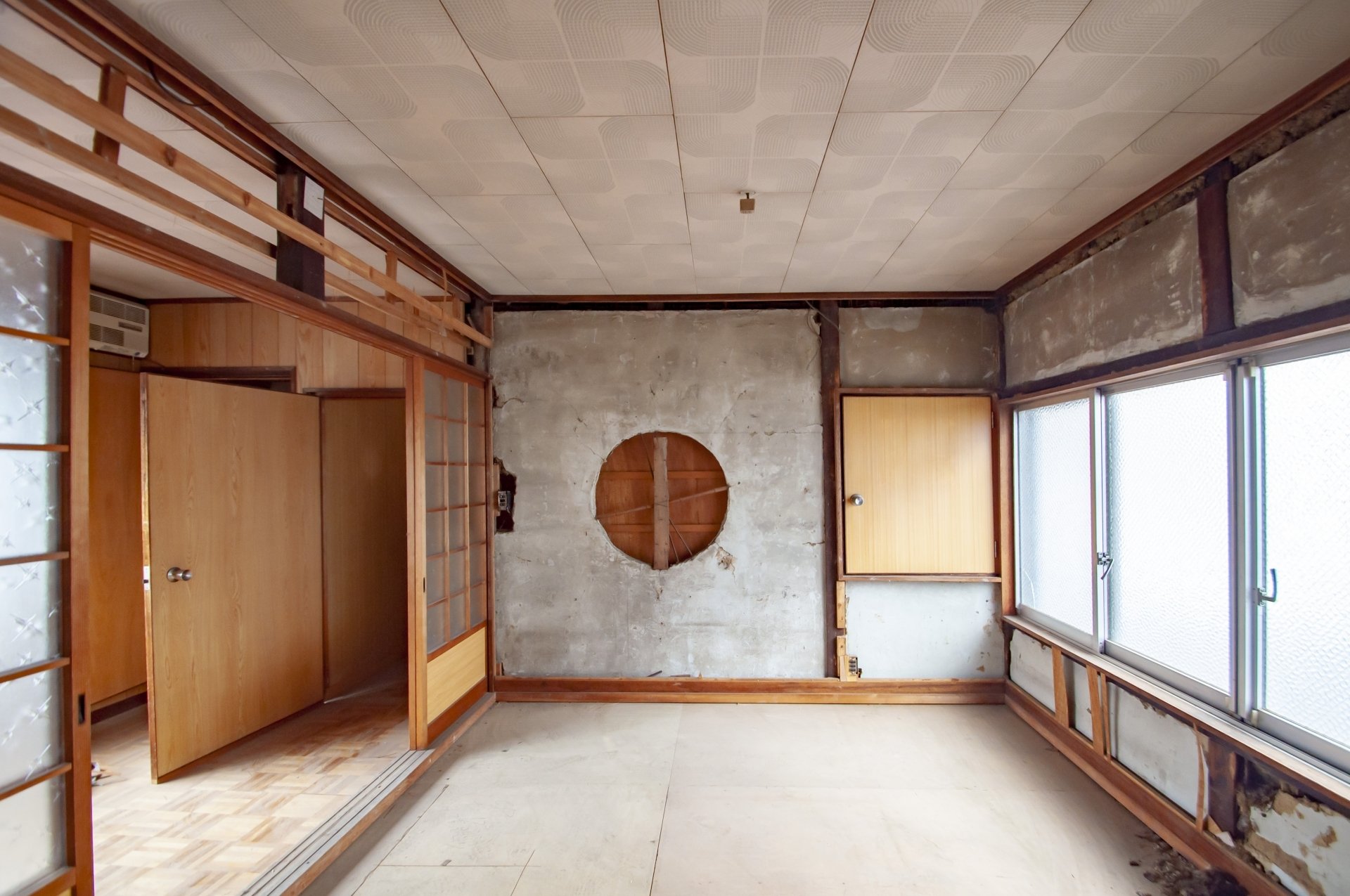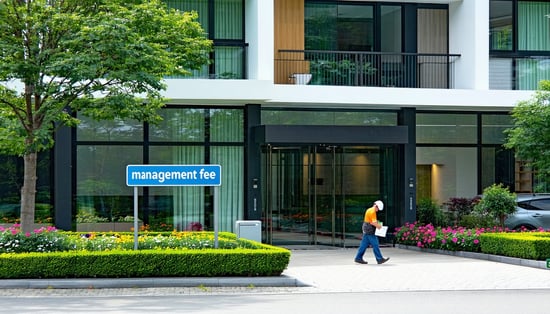Many of you who live in rental housing may have concerns about the condition of tatami mats in your Japanese-style rooms.
Tatami is a flooring material that is susceptible to various influences in daily life, such as discoloration due to sunburn, dents caused by furniture marks, and mold due to moisture. Especially in rental housing, questions often arise such as "I want to renovate tatami, but who will bear the cost?" and "To what extent does the obligation to restore tatami to its original state extend?
In this article, based on INA&Associates' long experience in the real estate industry, we will explain in detail the criteria for tatami renovation in rental housing, the concept of cost sharing, and points to consider when actually renovating.
Tatami renovation in rental housing needs to be considered from various perspectives, such as improvement of the living environment, consideration for health, and legal responsibility, in addition to mere aesthetics. By making appropriate decisions, it is possible to avoid unnecessary trouble while achieving a comfortable living environment.
Basic knowledge of tatami renovation in rental housing
Tatami Structure and Deterioration Mechanism
Tatami has a long history as a traditional Japanese flooring material, and its structure is very rationally designed. Tatami is composed of three main parts, each of which plays a different role.
Tatami-omote," which is located on the most surface, is made of woven rush grass and is the part directly touched by people. Depending on the frequency of use and environmental conditions, the tatami-omote is prone to discoloration due to sunburn, fluffing due to wear, and mold due to moisture.
Underneath the tatami surface is a core material called tatamidoko. Traditionally, tatami mats were made by compressing rice straw, but nowadays, construction materials and polystyrene foam tatami mats are also used. This tatami bed is an important element that determines the elasticity and durability of tatami.
The edges of tatami are attached with "tatamibelli," which protect the edges of the tatami surface and also play a decorative role.
The deterioration of tatami in rental housing is mainly caused by the following factors. First, sunburn caused by ultraviolet rays is a natural phenomenon that cannot be avoided and is especially noticeable in rooms facing south. Shrinkage and expansion due to changes in humidity, wear and tear caused by daily walking, and pressure from furniture installation are also causes of deterioration.
Types and Characteristics of Tatami Remodeling
There are three main methods of tatami renovation, depending on the degree of deterioration. Each method differs in cost-effectiveness and time of application, so it is important to make the appropriate choice.
Urafacing is the most minor maintenance method and involves removing the tatami surface and turning the reverse side to the front. This method is generally performed approximately 3-4 years after the tatami is installed and can handle minor discoloration and wear on the surface. The greatest advantage of flipping the tatami is that the cost is relatively low, but the effect is limited if the reverse side is also deteriorated.
Omotegae is a method of replacing only the tatami mat surface with a new one, leaving the tatami mat floor in place. It is recommended to replace tatami approximately 6 to 8 years after installation, and is applied when the surface has become discolored or worn. The appearance of the tatami is greatly improved and the fragrance of the rush grass is restored by replacing the surface of the tatami.
Shinshinshin is the most comprehensive renovation method, replacing the entire tatami surface, floor, and tatami edge with new ones. It is performed when more than 15 years have passed since the tatami was installed or when the tatami floor has deteriorated. Although new tatami fully restores the functionality of tatami, it is the most expensive.
Detailed analysis of costs
The cost of tatami renovation in rental housing varies greatly depending on the method chosen and the materials used. The following table summarizes general cost quotes.
| Renovation method | Cost per tatami | Construction period | Applicable period | Service life |
|---|---|---|---|---|
| Turn over | 4,000-5,000 yen | 1 day | 3 to 4 years after installation | 3-4 years after installation |
| Replacement of the front of the wall | 7,000-15,000 yen | 1 to 2 days | 6-8 years after installation | 6 to 8 years |
| New replacement | 6,000 - 20,000 yen | 2 to 3 days | More than 15 years after installation | 15 to 20 years |
In addition to these costs, an installation fee of approximately 6,000 yen per installation may be required. Prices also vary greatly depending on the quality of the tatami-omote used. The price is relatively low when Chinese rush grass is used, but the price increases for high-quality tatami-omote made of domestic rush grass.
In rental housing, an important issue is whether the burden of these costs belongs to the tenant or the landlord. Generally, deterioration caused by normal use is considered to be the responsibility of the landlord, but damage caused by the resident's negligence is often the responsibility of the resident.
Restrictions Specific to Rental Housing
Tatami remodeling in rental housing has specific restrictions that differ from those of owner-occupied houses. The most important restriction is the obligation to restore the property to its original condition as stipulated in the lease contract.
The scope of this "restoration" is defined in detail in guidelines issued by the Ministry of Land, Infrastructure, Transport and Tourism (MLIT). The Guidelines clearly state that tenants are not obligated to bear the burden for
Specifically, discoloration of tatami mats due to sunburn, minor dents caused by furniture installation, and wear and tear of tatami mat covers due to normal use are treated as "normal wear and tear" and are within the scope of what the landlord should bear. On the other hand, burnt tatami from cigarettes, stains from beverages, and damage caused by pets are the responsibility of the tenant.
In addition, prior consultation with the landlord or management company is always required before remodeling tatami in rental housing. Unauthorized remodeling may result in a breach of contract. In particular, if the remodeling involves a major change in specifications, such as changing from tatami to wood flooring, the landlord's approval is essential.
Merits and demerits of tatami renovation
Specific merits of tatami renovation
Tatami renovation in rental housing not only improves the aesthetics but also significantly improves the quality of life of the residents.
The improvement of the living environment is the most significant merit of tatami renovation. Replacing tatami with new mats restores the natural aroma unique to rush grass and improves the indoor air quality. Igusa has a natural humidity-regulating effect, absorbing moisture in humid summer months and releasing it in dry winter months, thereby maintaining proper indoor humidity. This humidity-regulating effect reduces the frequency of air conditioner use, which in turn reduces utility costs.
The positive effect on health is another important benefit that should not be overlooked. Old tatami mats are prone to the growth of mites and mold, which can cause allergy symptoms. Tatami renovation can eliminate these allergens and create a healthier living environment. This health benefit is especially valuable for families with small children and allergy sufferers.
The improved aesthetics and comfort will greatly improve the satisfaction of everyday living. Discolored and worn tatami mats darken the overall impression of a room and diminish the quality of life. By replacing tatami with new tatami, the room will look brighter and cleaner, and the impression of visitors will be greatly improved. In addition, the elasticity of Tatami will be restored, which will improve the feel of your feet when you walk, and you will not get tired even after sitting for a long time.
It is also important from the viewpoint of maintaining asset value. Even in rental housing, appropriate maintenance can reduce the cost of restoring the property to its original condition when the tenants move out. By taking action before large-scale repairs become necessary through systematic tatami remodeling, you may be able to reduce the cost burden as a result.
Disadvantages and cautions associated with tatami remodeling
On the other hand, there are some disadvantages of tatami renovation in rental housing that should be carefully considered.
The problem of cost burden is the biggest disadvantage. In rental housing, it may not be clear whether the cost burden of tatami renovation belongs to the tenant or the landlord. If this is not clearly stated in the contract, it may cause trouble later on. In particular, it is difficult to claim the cost from the lessor if the resident has voluntarily carried out the remodeling.
The relationship with the obligation to restore the room to its original condition is also a complicated issue. If a resident remodels tatami on his/her own, he/she may be required to restore the tatami to its original condition when he/she vacates the apartment. In particular, if the type or color of the tatami has been drastically changed, there is a risk that the restoration costs will be high.
The impact on your life during the construction period is also a factor to be considered. Tatami renovation usually requires a construction period of one to three days, during which time the room in question cannot be used. Especially if you live alone or in a small house, there is a possibility that your life will be greatly disturbed. Also, during the drying period of tatami, a peculiar odor may occur.
Difficulty in selecting a contractor is another disadvantage that cannot be ignored. Tatami remodeling is a work that requires specialized skills, and there is a big difference in the finished product depending on the skill of the contractor and the quality of the materials used. If the appropriate contractor is not selected, the expected effect may not be achieved.
Comparative Analysis of Merits and Demerits
The table below provides a specific comparison of the merits and demerits of tatami renovation.
| Item | Merit | Disadvantages | Measures to be taken and points to be noted |
|---|---|---|---|
| Cost aspects | Long-term maintenance cost reduction | Initial cost burden | Advance cost-sharing discussion |
| Living environment | Humidity control and scent improvement | Living restrictions during construction period | Preliminary adjustment of construction period |
| Health | Allergen removal | Temporary smell during construction | Thorough ventilation |
| Aesthetics | Improvement of room impression | Risk of restoration obligation | Prior confirmation of contract |
| Legal Aspects | Appropriate maintenance | Risk of unauthorized construction | Prior consultation with the landlord |
What this comparative analysis reveals is that while the benefits of tatami renovation certainly exist, the key to success is proper management of the risks specific to rental housing. In particular, it is clear that prior consultation and confirmation of contractual terms are extremely important.
Strategies for Risk Mitigation
The following strategic approaches can be used to minimize the disadvantages of tatami renovation.
First, thorough prior consultation is most important. When considering tatami renovation, it is necessary to consult with the landlord or management company in advance to clearly agree on the sharing of costs, specifications of materials to be used, and the scope of restoration to the original state. It is important to record the details of these discussions in writing to prevent problems later on.
A phased approach is also an effective strategy. Instead of suddenly implementing a new replacement, the risk can be spread out by starting with turning over or changing the surface first, and then considering the next step while confirming the effectiveness of the new replacement.
Reduce technical risk by working with specialized contractors. By obtaining quotes from multiple contractors and comparing their track records and warranties, you can select the most appropriate contractor. Also, you can choose the best remodeling method based on professional advice from the contractors.
Cases when you should consider tatami remodeling in rental housing
Specific situations where remodeling is recommended
Situations in which tatami remodeling should be considered in rental housing include not only simple appearance issues, but also factors related to the health and safety of the occupants. By implementing remodeling at the appropriate time, a more comfortable and healthy living environment can be achieved.
If health risks are present, this is a situation where remodeling should be considered as a top priority. If mold is growing on tatami mats, mite infestation is suspected, or allergy symptoms are worsening, immediate action is required. It is not appropriate to neglect these health risks, especially in homes with small children, the elderly, or people with allergies.
Structural problems are also an important factor to consider. Symptoms such as excessive sinking of the tatami floor, unusual noises when walking, or large gaps between tatami mats may indicate deterioration of the tatami floor. If left unchecked, these problems may lead to an increased risk of falls and further deterioration.
Significant aesthetic problems are also a subject for consideration. Discoloration throughout the room due to sun damage, noticeable stains or dirt, or excessive fluffing of the tatami surface can significantly deteriorate the overall impression of the room. Aesthetic improvement is especially important for homes with many visitors or telecommuters who often conduct videoconferences.
A noticeable loss of functionality is another situation to consider. Symptoms such as loss of elasticity and hardening of the tatami, inability to perceive the humidity control effect, or complete loss of the aroma of the rush grass indicate that the original function of the tatami has deteriorated.
Effective negotiation points with landlords and management companies
Appropriate negotiations with landlords and management companies are essential for successful tatami renovation in rental housing. Successful negotiation requires a strategic approach and adequate preparation.
Detailed documentation of the current conditions and preparation of evidence are the foundation for negotiations. Photographically document the deterioration of the tatami mats and, if possible, prepare documentation that can be compared to the condition of the tatami mats at the time of occupancy. In case of health problems, a doctor's certificate or an investigation report by a specialized contractor will also be effective evidence.
Clarification of the legal basis is another important factor. Based on the Ministry of Land, Infrastructure, Transport and Tourism's guidelines for restoration to the original condition, we will clearly identify which parts of the property are considered normal wear and tear and which parts are the responsibility of the tenant. In particular, it is effective to specifically indicate that discoloration due to sunburn and wear due to normal use are considered to be the responsibility of the lessor.
Clearly show the benefits to the lender by presenting cost-effectiveness. Specifically explain the benefits of appropriate tatami renovation, such as maintaining the property's asset value, improving competitiveness when recruiting new tenants, and postponing the need for major repairs.
We ensure flexibility in negotiations by presenting multiple solutions. We will prepare multiple options, such as all landlord-pays, all tenant-pays, cost-sharing, etc., to find a solution that is acceptable to both parties.
We will increase the objectivity of negotiations by utilizing estimates from professional contractors. By obtaining detailed estimates from multiple vendors and presenting a fair price level, transparency in negotiations can be ensured.
Cost Sharing Methods and Examples
There are various patterns of cost sharing for tatami renovation in rental housing. It is important to consider the most appropriate sharing method by referring to actual cases.
In the case of deterioration due to normal wear and tear, the lessor bears the cost in principle. Discoloration due to sunburn, minor dents caused by furniture installation, and wear and tear of tatami mat covers due to normal use are considered to be within the scope of expenses that should be borne by the lessor based on the guidelines of the Ministry of Land, Infrastructure, Transport and Tourism. In this case, the tenant may be able to remodel the tatami without incurring any costs.
In the case of damage caused by the resident's negligence, the resident will be responsible for the cost. Cigarette burns, stains from beverages, damage caused by pets, and scratches from dragging heavy objects are considered to be the responsibility of the tenant. However, even in this case, it is common to take depreciation due to age-related deterioration into consideration, and to adjust the percentage of responsibility according to the number of years the tenant has lived in the property.
In cases involving an upgrade, there are methods where the resident bears the difference. For example, when changing from standard tatami mats to high quality Japanese rush grass tatami mats, the tenant bears only the difference between the standard tatami mats and the standard specifications, and the landlord bears the basic reupholstering cost.
As a preferential measure for long-term tenants, there is also a method to increase the landlord's burden ratio according to the length of tenancy. For example, for long-term tenants (5 years or more), the landlord may share 70% of the cost and the tenant 30% of the cost.
The following table summarizes specific examples of cost sharing.
| Cause of Deterioration | Period of Occupancy | Landlord's share | Tenant's share | Basis |
|---|---|---|---|---|
| Discoloration due to sunburn | Regardless of | 100% (of the total) | 0% (of the total) | Normal wear and tear |
| Minor dents from furniture | Regardless of | 100% 100% | 0% (regardless of minor dents from furniture) | Normal wear and tear |
| Cigarette burns | Less than 1 year | 0 | 100% (of the total) | Damage due to negligence |
| Burnt cigarette | More than 5 years | 30% (of the total) | 70% (over 5 years) | Depreciation considerations |
| Beverage stains | Regardless | 0% (of the total) | 100% (regardless of whether the stain was caused by | Damage due to negligence |
| Wear due to normal use | Less than 3 years | 70% 70% | 30% (considering the period of use) | Consideration of duration of use |
| Wear due to normal use | More than 5 years | 100% (in the case of a single year) | 0% Normal wear | Normal wear and tear |
Practical advice for successful negotiation
The following practical approaches are effective for successful tatami renovation negotiations.
Choice of timing is an important factor. Selecting a time when improving tenant satisfaction is important to the landlord, such as when the contract is up for renewal or when the property has a high vacancy rate, will increase the likelihood of success in negotiations.
It is effective to negotiate in phases to ensure that both parties understand each other. Rather than presenting a full set of demands from the outset, a step-by-step approach is recommended: first share the current issues, then explain the need for a solution, and finally offer a concrete proposal.
The use of experts can enhance the objectivity and professionalism of negotiations. The opinions of tatami mat specialists and real estate experts can improve the persuasive power of negotiations.
It is important to keep a clear record of negotiations and agreements in writing. Since oral agreements alone may cause problems later, it is recommended that important agreements be recorded in writing and signed by both parties.
Conclusion
Criteria for Tatami renovation in rental housing
When considering tatami renovation in rental housing, it is important to evaluate multiple factors comprehensively. Please refer to the following decision criteria based on the information explained in this article.
Priority of health and safety aspects is the most important criterion. If mold growth, dust mite infestation, worsening allergy symptoms, or other problems that directly affect health are occurring, renovation should be considered as a priority over cost burden issues. It is recommended that this criterion be given top priority, especially in homes with small children and the elderly.
By confirming the legal basis, appropriate cost burdens can be determined. Based on the Ministry of Land, Infrastructure, Transport and Tourism's guidelines for restoration to the original condition, the landlord can be asked to bear the burden for deterioration that falls under normal wear and tear. On the other hand, in principle, tenants are responsible for damage caused by their own negligence.
Cost-benefit analysis can evaluate the appropriateness of remodeling . It is important to make the best decision by comprehensively considering the renovation costs, expected effects, remaining expected occupancy period, and availability of alternatives.
The relationship with the lender is another important factor to consider. If a good relationship is maintained, it is easier to find a cooperative solution, whereas if the relationship has deteriorated, negotiations on legal grounds may be necessary.
Specific Actions to Practice
For a successful tatami renovation, it is recommended that the following specific actions be implemented in phases.
In the first step: Identification and documentation of the current situation, the deterioration of the tatami should be documented in detail, and evidence should be left behind in the form of photographs or videos. If possible, we will also prepare documents that can be compared with the condition at the time of occupancy. If health problems have arisen, we will also consider a doctor's diagnosis or an investigation by a professional contractor.
In the second step: Confirmation of Legal Basis, we will check the contents of the lease agreement in detail to understand the provisions regarding restoration to the original condition. In addition, we will clarify which parts of the property fall under the category of normal wear and tear by comparing it with the guidelines of the Ministry of Land, Infrastructure, Transport and Tourism.
In the third step: obtaining quotations from specialized companies, detailed quotations are obtained from multiple companies specializing in tatami mats in order to ascertain a reasonable price level. At this time, we also check the track record of the vendor and the contents of their warranty.
In the fourth step: Discussions with the landlord and management company, we will hold constructive discussions based on the materials we have prepared. We will present multiple solution proposals and seek a point of agreement that is acceptable to both parties.
In the fifth step: Documentation of the agreement, the content of the agreement reached in the discussions is recorded in writing and signed by both parties. This will prevent problems later on.
Improving the living environment from a long-term perspective
It is important to consider tatami renovation as a part of long-term improvement of the living environment, not as a one-off measure.
Preventive maintenance can postpone the need for large-scale renovation . Regular cleaning, proper humidity control, and furniture rearrangement can delay the deterioration of tatami.
Planned renovation can spread the cost burden . By turning over tatami, changing the surface, and making new tatami at the right time, you can avoid incurring a large cost burden at once.
By considering the improvement of the overall living environment, a more comfortable life can be realized. Synergistic effects can be expected by considering wallpaper replacement, lighting improvement, etc. in conjunction with tatami renovation.
Future course of action
With reference to the contents of this article, please consider tatami remodeling according to the following action guidelines.
First, objectively evaluate the current condition of the tatami to determine the need for remodeling. If there is a health risk, take immediate action; if it is only an aesthetic problem, carefully consider the cost-effectiveness.
Next, review the lease agreement and Ministry of Land, Infrastructure, Transport and Tourism guidelines to clarify the scope of legal responsibility. If there are any uncertainties, consider consulting a real estate professional.
Then, obtain quotes from several professional contractors and select a contractor with a fair price and trustworthiness. In addition to price, technical capabilities and warranty details are also important factors in this decision.
Finally, constructive discussions are held with the lender or management company to find a solution that is acceptable to both parties. If an agreement is reached, be sure to record it in writing.
With the right approach, tatami renovation in rental housing can achieve a beneficial outcome for both the occupants and the landlord. Please use the knowledge and know-how explained in this article to achieve a more comfortable and healthy living environment.
Frequently Asked Questions
Q1: Who pays the cost when tatami mats become discolored due to sunburn in a rental house?
A1. As discoloration of tatami due to sunburn falls under "normal wear and tear," in principle, the lessor is responsible for the cost. According to the Ministry of Land, Infrastructure, Transport and Tourism's "Troubles and Guidelines Concerning Restoration to Original Condition," discoloration due to sunburn is positioned as a natural phenomenon that cannot be avoided and is outside the scope of the tenant's responsibility. However, if there is a special clause in the lease agreement, it may take precedence, so it is important to check the agreement.
Q2. If mold occurs on tatami mats, is it always the responsibility of the tenant?
A2. Regarding the occurrence of mold on tatami mats , the responsibility depends on the cause of the mold. The landlord may be responsible for structural problems of the building (leaks, condensation, etc.) or spontaneous occurrence in the absence of prior warning from the landlord. On the other hand, if the mold is the result of the tenant's failure to properly ventilate and clean the building, the tenant is responsible. The important thing is to objectively identify the cause of the mold.
Q3. What should I pay attention to when hiring a contractor for tatami remodeling?
A3. Please note the following points when choosing a tatami remodeling contractor. First, it is important to obtain quotes from multiple companies and compare not only the price but also the quality of materials used and warranty. Also, check the contractor's track record, qualifications, and past examples of construction to evaluate their reliability. Furthermore, in the case of rental housing, it is necessary to obtain the landlord's approval in advance. It is also recommended to clarify in advance the after-sales support and warranty period after the installation.
Q4: What procedures are required if I want to change from tatami to wood flooring?
A4: When changing from tatami to wood flooring in a rental apartment, written approval from the landlord or management company is always required in advance. This is a change that is greatly related to the obligation to restore the property to its original condition, and unauthorized implementation may result in a breach of the contract. When obtaining approval, it is important to discuss in detail the specifications of the materials to be used, the construction method, and the method of restoring the property to its original condition upon vacating, and to record the details of the agreement in writing. Also, since flooring work is a larger scale work than replacing tatami mats, it is necessary to give consideration to neighboring residents.
Q5: What should I do if I notice deterioration of tatami immediately after moving in?
A5. If you are concerned about the deterioration of tatami immediately after moving in , please first record the detailed condition of the tatami at the time of moving in and leave photographic or video evidence. Then, promptly contact the lender or management company and report the current condition. Deterioration that existed before you moved in is likely to be repaired under the landlord's responsibility, so it is important to take action as soon as possible. In addition, please also check the records of your presence at the time of occupancy and the contract documents to confirm that there are no discrepancies between the descriptions and the actual condition of the property. If a delay occurs, the tenant may be held responsible for the repairs, so prompt action is recommended.
Reference Information
Related laws and guidelines
Ministry of Land, Infrastructure, Transport and Tourism, "Troubles and Guidelines Concerning Restoration to the Original Condition (Revised Version)" (Japanese only)
https://www.mlit.go.jp/common/000991391.pdf
This is the most important guideline regarding the restoration of rental housing to its original condition. It explains in detail the scope of liability and cost-sharing regarding tatami deterioration.
Civil Code (Claims) Amendment Act
https://www.moj.go.jp/MINJI/minji06_001070000.html
The revised Civil Code, which went into effect in April 2020, clearly stipulates the lessee's obligation to restore the property to its original condition, and clearly stipulates that the lessee is not obligated to bear the burden of normal wear and tear.
Professional organizations
National Federation of Building Lots and Buildings Transaction Associations
Provides consultation services on real estate transactions and information on resolving problems with rental housing.
Japan Rental Housing Management Association
An industry organization for the management of rental housing that provides guidelines for restoration and repair.
Consumer Consultation Service
National Consumer Affairs Center
Provides free consultation on problems related to rental housing and consumer issues. Similar consultations are available at consumer affairs centers nationwide.
Houterasu (Japan Legal Support Center)
This is a consultation service for legal troubles, and you can also receive professional advice on restoration issues of rental housing.
Please feel free to contact INA & Associates, Inc. if you have any questions or concerns about your rental housing. We will propose the best solution based on our professional knowledge and extensive experience.

Daisuke Inazawa
Representative Director of INA&Associates Inc. Based in Osaka, Tokyo, and Kanagawa, he is engaged in real estate sales, leasing, and management. He provides services based on his extensive experience in the real estate industry. Based on the philosophy that “human resources are a company's most important asset,” he places great importance on human resource development. He continues to take on the challenge of creating sustainable corporate value.

.png)
